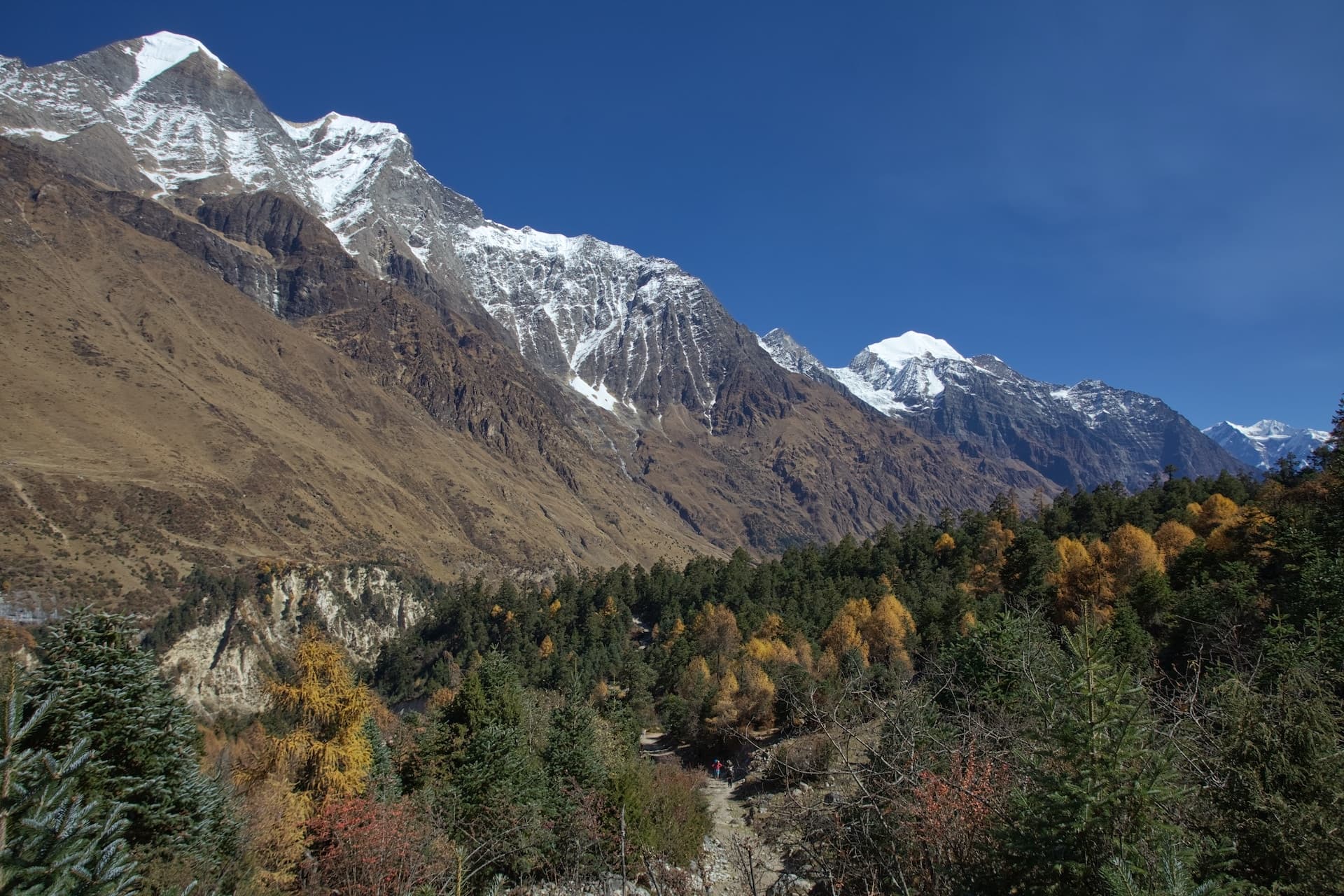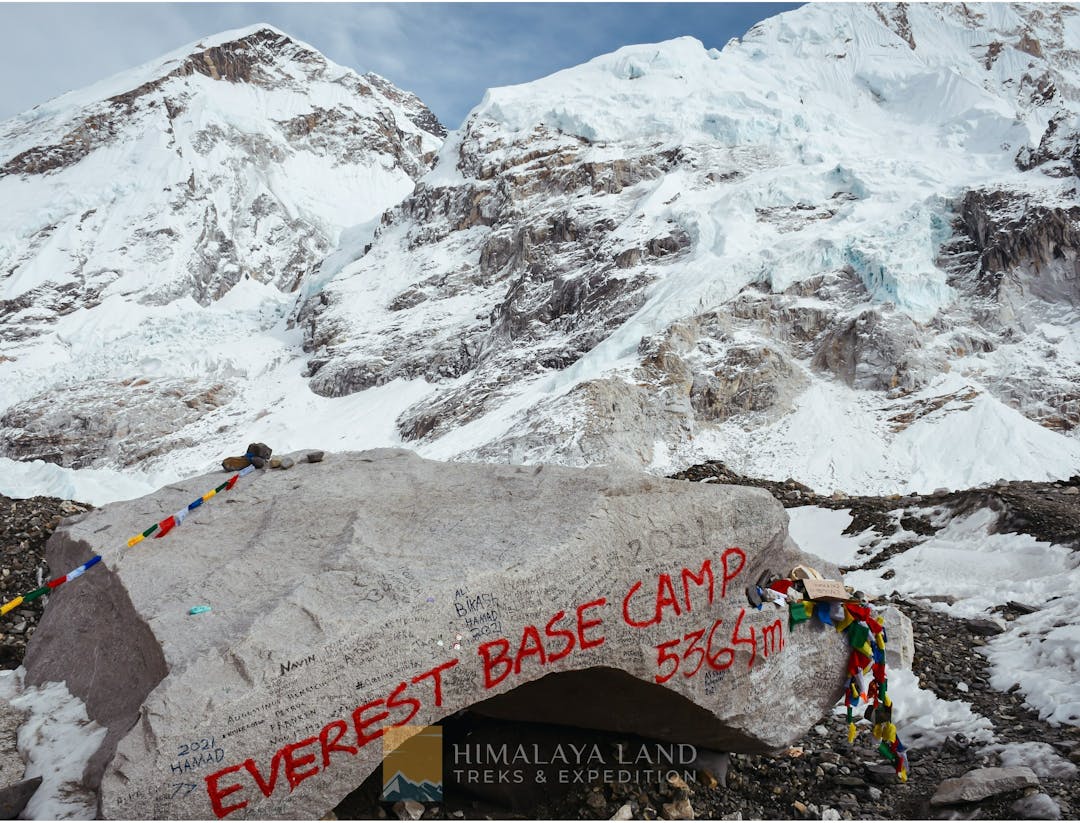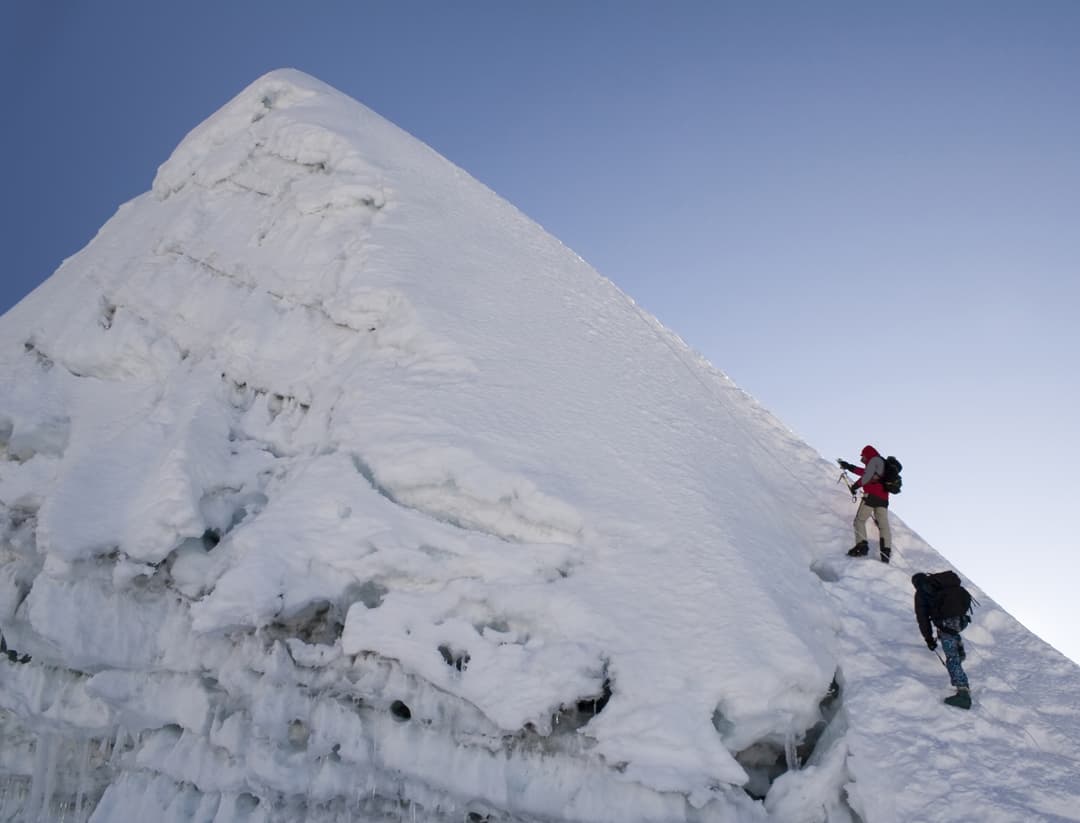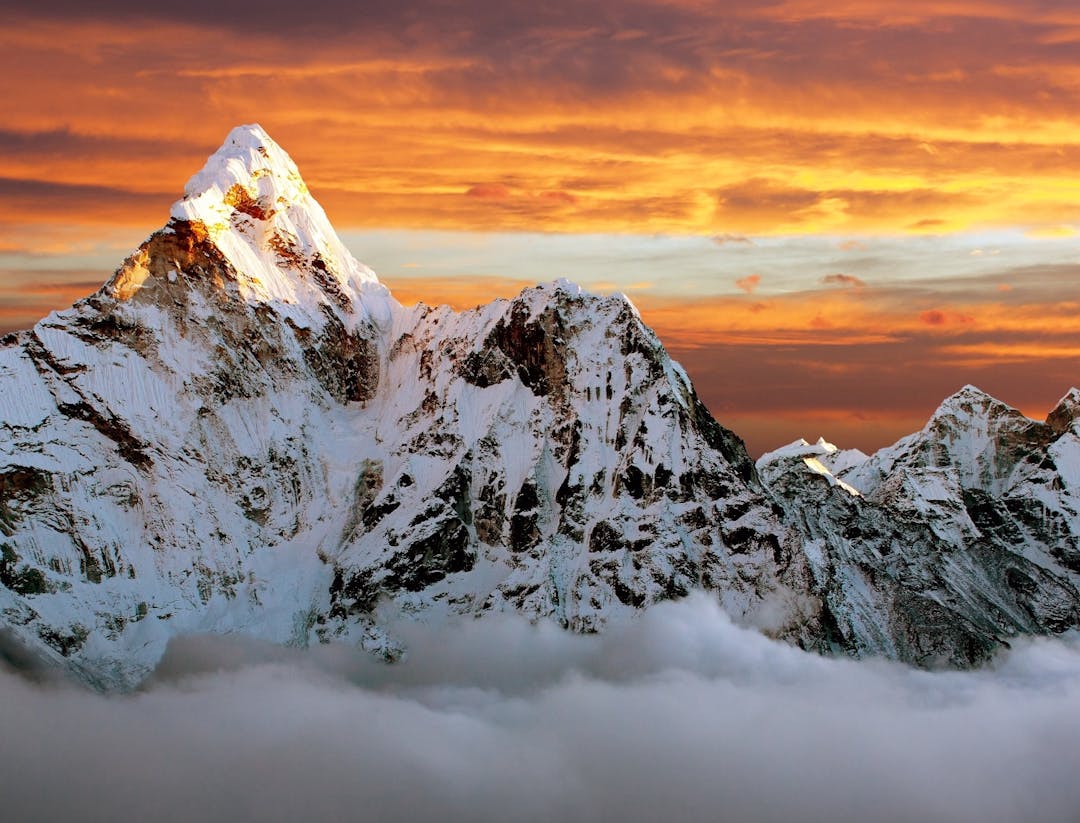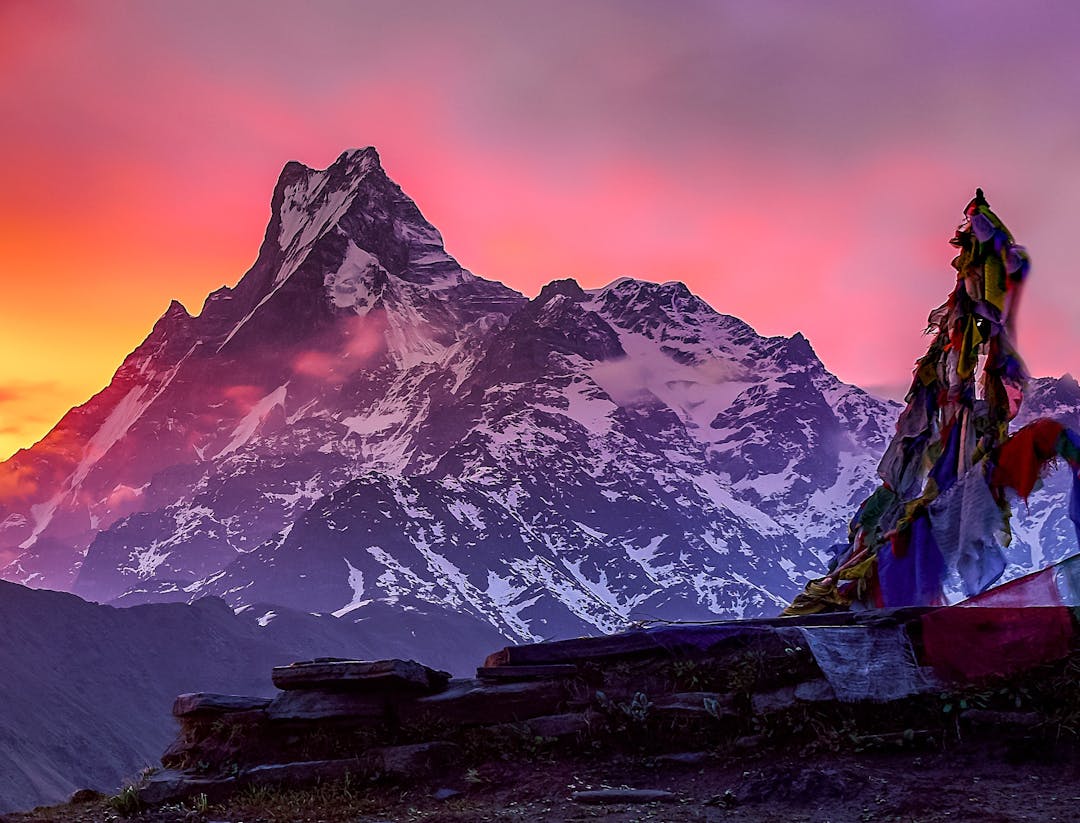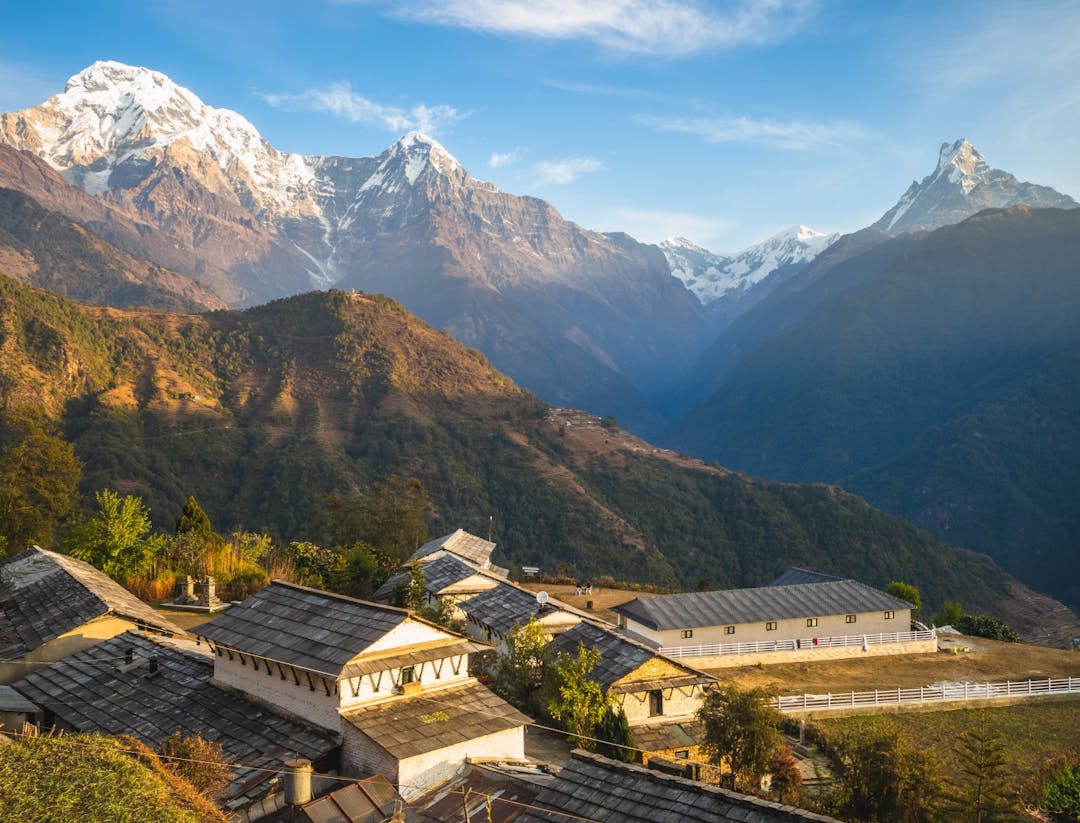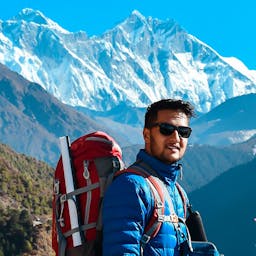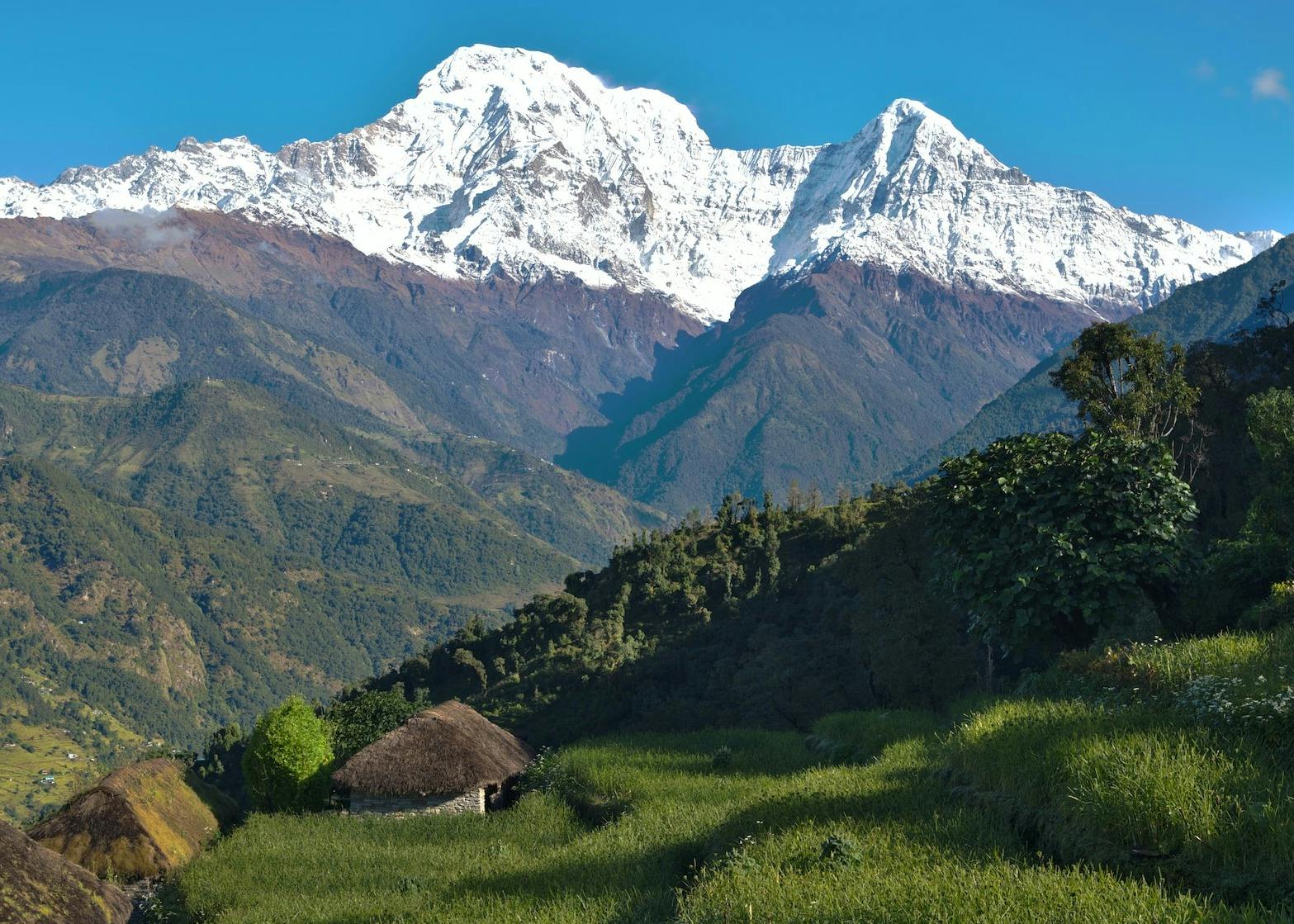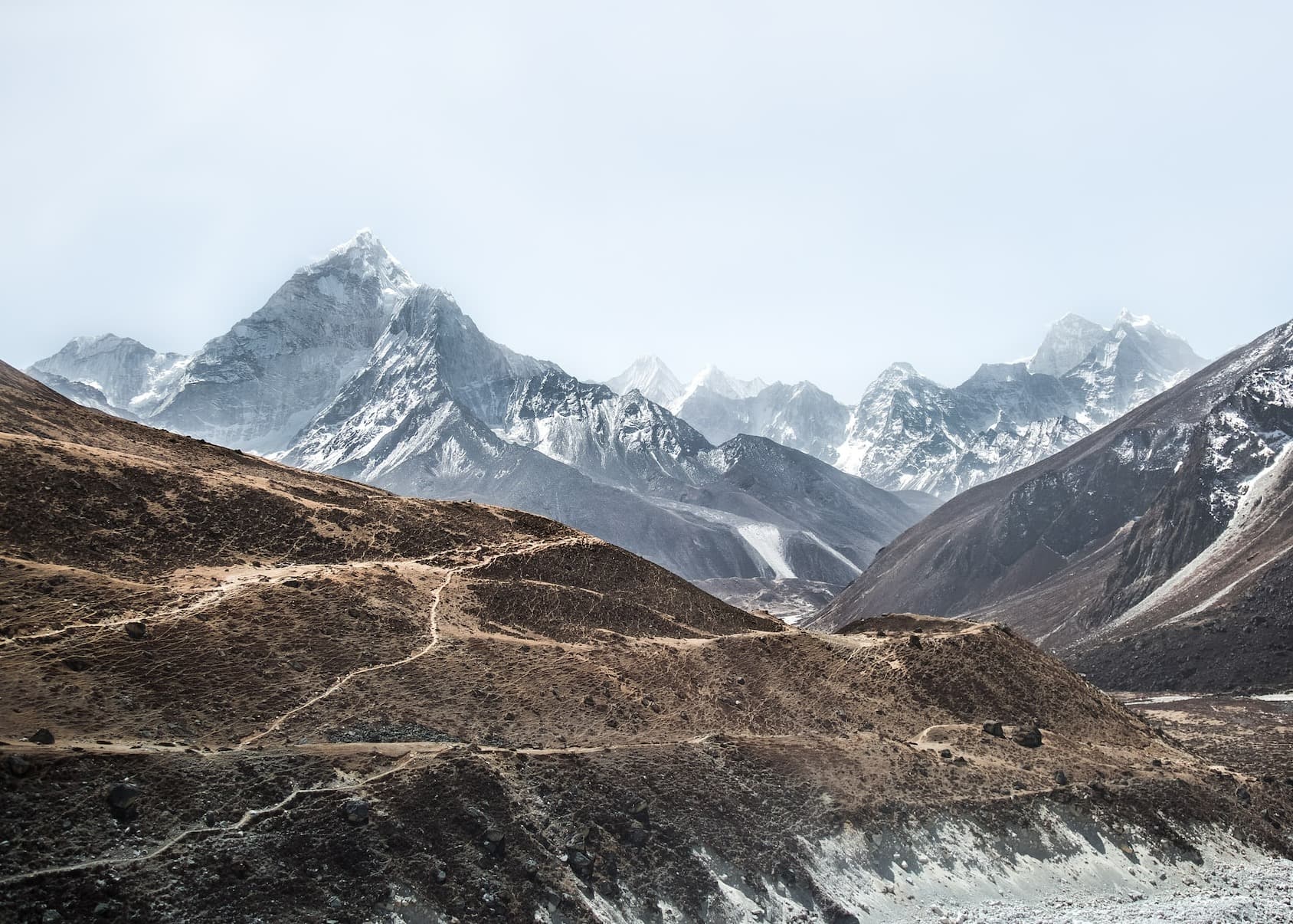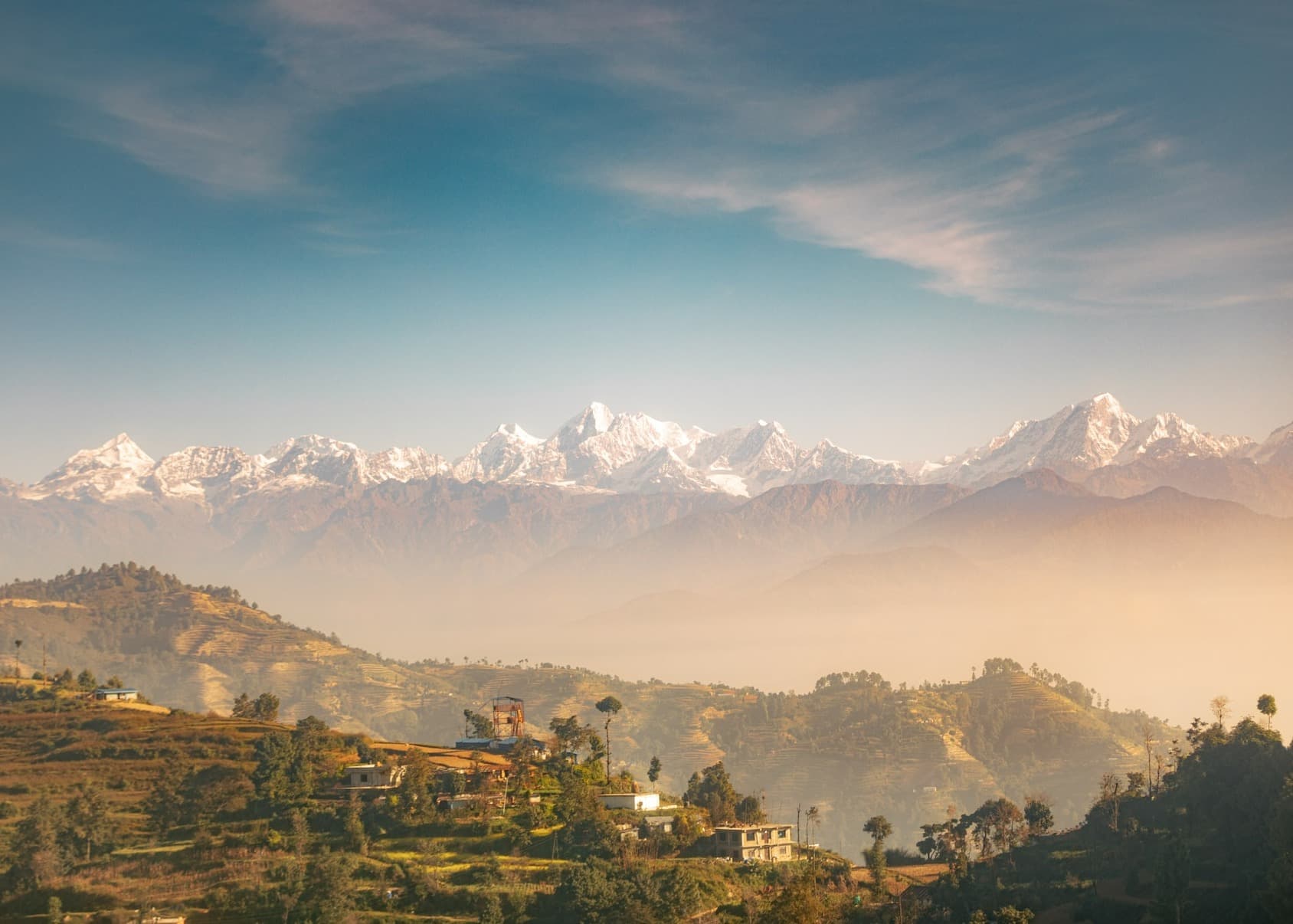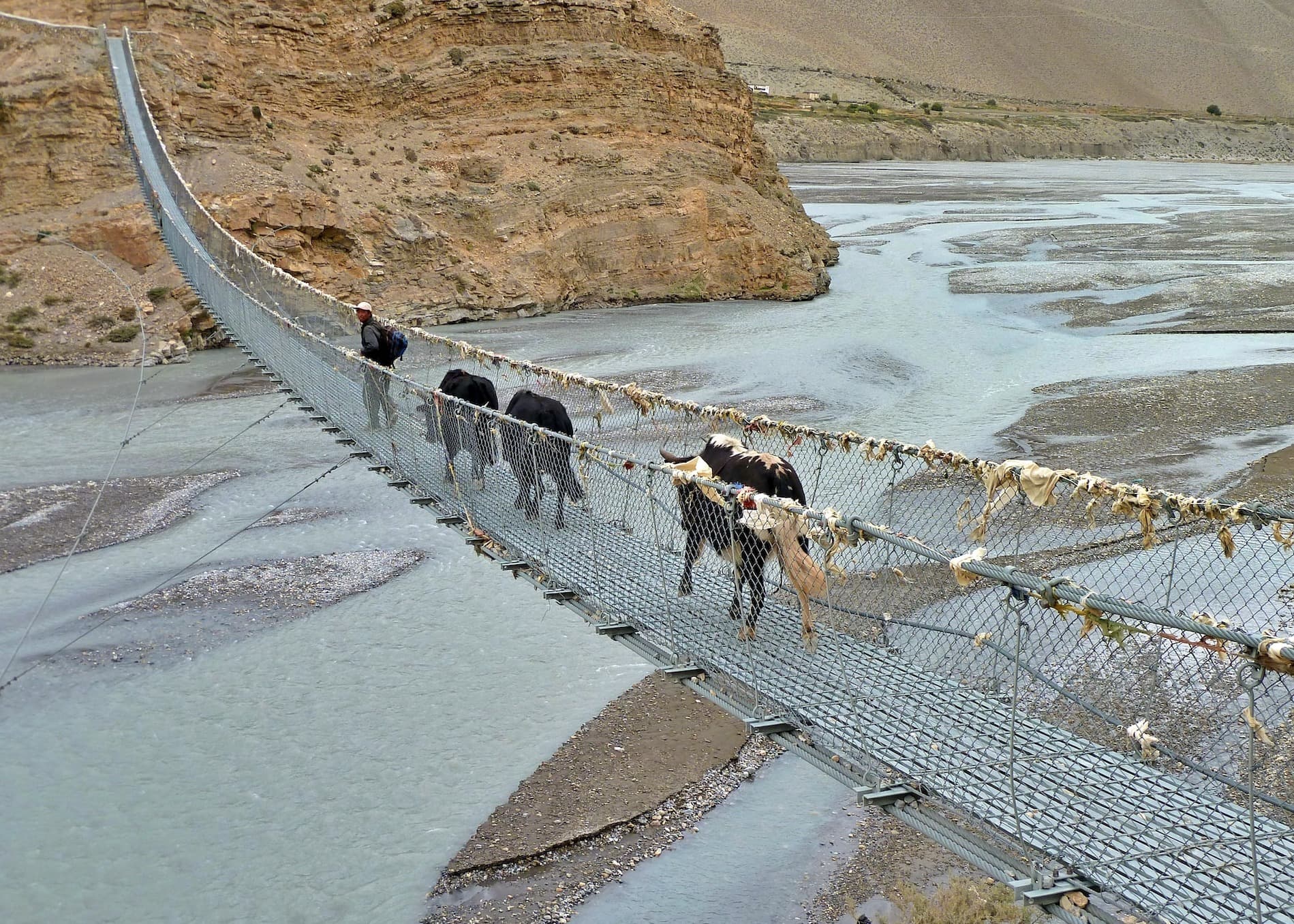- Planning for the Manaslu Circuit Trek
- Why should you consider trek manaslu circuit?
- How to prepare for the trek?
- Acclimatization
- Permits and Insurance
- Manaslu Circuit Itineary, Difficulty, Highlights, and Alternate routes
- Understanding the Costs of Trekking the Manaslu Circuit
- Difficulty Level of the Trek
- Highlights and Must-See Attractions
- Alternate Routes and Side Trips
- Accommodation and Food
- Cultural Insights
- Safety Considerations
- Final thoughts on the Manaslu Circuit Trek
- Tips for a successful and enjoyable experience
The Manaslu Circuit Trek is a popular trekking route in Nepal that takes you through the beautiful Manaslu Conservation Area. Located in the Gorkha district of Nepal, the region is named after Mount Manaslu, the eighth highest mountain in the world. The Manaslu region has a rich history dating back to the 16th century when it was ruled by the powerful Gurkha Kingdom. It was later annexed by the British Empire in the 19th century.
The Manaslu Conservation Area was established in 1998 to protect the diverse flora and fauna of the region, including rare species like the snow leopard and Himalayan musk deer. The conservation area covers an area of 1,663 square kilometers and is home to over 2,000 species of plants, 33 species of mammals, and 110 species of birds.
The Manaslu Circuit Trek is a relatively new trekking route that was opened to foreign trekkers in 1991. Since then, it has become a popular alternative to the crowded Annapurna Region and Everest Region. The trek takes you through remote villages, lush forests, and high mountain passes, offering stunning views of the Himalayan ranges, including Mount Manaslu, Ganesh Himal, and Annapurna ranges.
In recent years, the Manaslu region has undergone significant development, including the construction of new roads and the expansion of tourism infrastructure. Despite this, the region has managed to preserve its unique cultural and natural heritage, making it a popular destination for adventure seekers and nature lovers alike.
Overall, the Manaslu Circuit Trek is a unique and challenging trek that offers an off-the-beaten-path experience to those who are willing to explore the beauty and history of this incredible region.
Planning for the Manaslu Circuit Trek
The Manaslu Circuit Trek is a challenging yet rewarding trek that offers breathtaking views of the Himalayas and an opportunity to immerse yourself in the culture and traditions of the region. However, proper planning is essential to ensure a safe and enjoyable experience. In this article, we will discuss some key considerations for planning your Manaslu Circuit Trek.
Choosing a Trekking Agency
One of the main advantages of choosing Himalaya Land Treks is that we offer daily departures for the Manaslu Circuit Trek. This means that you can choose the best time that suits your schedule and join our group for the trek. Our experienced guides will lead you through the trail and ensure your safety and comfort throughout the journey.
Another advantage of choosing Himalaya Land Treks is that our packages are all-inclusive. This means that everything you need for the trek is included in the package, such as permits, accommodations, food, transportation, and even a porter to carry your luggage. You don't have to worry about anything except enjoying the trek.
We also offer the best price for our Manaslu Circuit Trek packages. Our prices are competitive, and we strive to provide the best value for our clients. You can be assured that you're getting the best deal for your money when you book with us.
In addition, we prioritize safety and comfort on our treks. Our guides are experienced and trained in first aid and altitude sickness prevention. We also provide comfortable teahouse accommodations and delicious food to make your trekking experience enjoyable.
In conclusion, Himalaya Land Treks is a reputable and experienced trekking agency that offers daily departures for the Manaslu Circuit Trek. Our all-inclusive Manaslu Circuit Trek package and competitive prices make us the best choice for your trekking adventure in Nepal. Contact us today to book your Manaslu Circuit Trek and experience the beauty of the Himalayas.
Best Time to Visit
The Manaslu Circuit Trek is situated in the Himalayas of Nepal, and the weather can vary greatly throughout the year. It's crucial to choose the best time to visit to ensure a comfortable and enjoyable trekking experience. The two main trekking seasons for the Manaslu Circuit Trek are autumn and spring.
Autumn season from September to November and spring season from March to May. During these months, the weather is stable and the skies are clear, providing excellent views of the mountains. The temperature is mild and comfortable during the day, but can drop significantly at night. It is important to pack warm clothing to stay comfortable in the cold temperatures.
January
Weather: January is one of the coldest months to visit the Manaslu Circuit Trek. The skies are usually clear, but there may be occasional snowfall.
Temperature: The temperature during the day can range from 8°C (46°F) to -8°C (18°F). At night, temperatures can drop below freezing.
February
Weather: February is still considered a cold month for trekking in the Manaslu region.
Temperature: The temperature during the day can range from 9°C (48°F) to -7°C (19°F). At night, temperatures can drop below freezing.
March
Weather: March marks the beginning of the spring season and is a popular time for trekking in the Manaslu Circuit. The weather is generally stable, with occasional rainfall.
Temperature: The temperature during the day can range from 10°C (50°F) to 2°C (36°F). At night, temperatures can drop below freezing.
April
Weather: April is one of the best months to trek the Manaslu Circuit. The weather is stable, and the skies are clear, providing excellent views of the mountains.
Temperature: The temperature during the day can range from 14°C (57°F) to 4°C (39°F). At night, temperatures can drop to 0°C (32°F).
May
Weather: May is another popular month for trekking in the Manaslu Circuit. The weather is mild, and the skies are clear.
Temperature: The temperature during the day can range from 17°C (63°F) to 7°C (45°F). At night, temperatures can drop to 0°C (32°F).
June
Weather: June marks the beginning of the monsoon season, and the weather can be unpredictable. There may be heavy rainfall and occasional landslides, making trekking challenging.
Temperature: The temperature during the day can range from 19°C (66°F) to 10°C (50°F). At night, temperatures can drop to 5°C (41°F).
July
Weather: July is one of the wettest months in the Manaslu Circuit, and trekking can be difficult due to heavy rainfall and muddy trails.
Temperature: The temperature during the day can range from 19°C (66°F) to 11°C (52°F). At night, temperatures can drop to 5°C (41°F).
August
Weather: August is still considered a monsoon season, and the weather can be unpredictable. There may be occasional clear skies, but there can also be heavy rainfall.
Temperature: The temperature during the day can range from 19°C (66°F) to 11°C (52°F). At night, temperatures can drop to 5°C (41°F).
September
Weather: September marks the end of the monsoon season, and the weather is stable. The skies are clear, and the trails are less crowded.
Temperature: The temperature during the day can range from 18°C (64°F) to 9°C (48°F). At night, temperatures can drop to 2°C (36°F).
October
Weather: October is one of the best months to trek the Manaslu Circuit. The weather is stable, and the skies are clear, providing excellent views of the mountains.
Temperature: The temperature during the day can range from 15°C (59°F) to 6°C (43°F). At night, temperatures can drop to -3°C (37°F).
November
Weather: November is another popular month for trekking in the Manaslu Circuit. The weather is stable, and the skies are clear, providing excellent views of the mountains.
Temperature: The temperature during the day can range from 11°C (52°F) to 2°C (36°F). At night, temperatures can drop to -4°C (25°F).
December
Weather: December is one of the coldest months to trek the Manaslu Circuit. The skies are usually clear, but there may be occasional snowfall.
Temperature: The temperature during the day can range from 8°C (46°F) to -6°C (21°F). At night, temperatures can drop to -10°C (14°F).
In summary, the best time to visit the Manaslu Circuit Trek is from September to November and March to May when the weather is stable, and the skies are clear. However, it is essential to pack warm clothing, especially at higher elevations where temperatures can drop significantly. During the monsoon season from June to August, trekking can be challenging due to heavy rainfall and muddy trails. And in the winter months from December to February, it can be extremely cold, with occasional snowfall, making trekking difficult at higher elevations.
Planning for the Manaslu Circuit Trek requires careful consideration and preparation. By choosing the best time to visit, obtaining the necessary permits, and choosing the right trekking agency, you can ensure a safe and enjoyable trekking experience.
Why should you consider trek manaslu circuit?
The Manaslu Circuit Trek is an ideal choice for those seeking an adventurous and challenging trekking experience in Nepal. This trek offers stunning views of the Himalayan range, including the eighth highest peak in the world, Mount Manaslu. Besides, the trek also takes you through remote villages and diverse ethnic communities, offering an opportunity to experience their unique culture, lifestyle, and traditions.
Another reason to consider the Manaslu Circuit Trek is its lesser-crowded trail. Unlike other popular trekking routes in Nepal, such as the Everest Base Camp Trek or the Annapurna Circuit Trek, the Manaslu Circuit Trek sees relatively fewer trekkers. This makes the trail less crowded, allowing you to enjoy the natural beauty of the region in peace and quiet.
When it comes to trekking, preparation is key to a successful and enjoyable experience. The Manaslu Circuit Trek is no exception - it requires adequate preparation, both physically and mentally, to make the most out of your adventure.
In this guide, we'll cover everything you need to know to prepare for the Manaslu Circuit Trek.
How to prepare for the trek?
Before embarking on the Manaslu Circuit Trek, it is essential to prepare yourself physically, mentally, and logistically. Here are some tips to help you prepare for the trek:
Physical Training
The Manaslu Circuit Trek is a challenging trek that requires a good level of physical fitness. It's important to start training at least a few months before your trek to ensure that you are prepared for the demanding terrain.
Start with cardio exercises like running, cycling, or swimming to improve your stamina. You can also include strength training exercises to build your core, leg, and upper body strength. Hiking on inclines and declines can also help prepare your body for the trek.
Mental Preparation
Trekking in the Manaslu region can be mentally challenging as well. The trek requires long hours of walking in high altitude, which can be physically and mentally exhausting. Therefore, it's important to prepare yourself mentally for the challenges that you might face on the trek.
Meditation, yoga, and breathing exercises can help you relax and stay calm during the trek. You can also visualize your trekking experience and mentally prepare yourself for the challenges ahead.
Trekking gear essentials
When it comes to trekking, packing the right gear and equipment is crucial for a comfortable and safe journey. Here are some essential items that you should consider packing for the Manaslu Circuit Trek:
Clothing:
- Warm hat, sunhat/bandana, scarf, sunglass, gloves - wool or fleeced and Gore-Tex
- 3-4 Long and short sleeve t-shirts
- Heavy fleece or down jacket
- Waterproof jacket with hood
- Wind and waterproof jacket & pants
- Comfortable and sturdy walking shoes (often worn before departure)
- Running shoes or evening sandals
- Hiking socks (ensure boots fit socks combination)
- Wool jumper/sweater/fleece (1 lightweight during summer and one heavyweight or two lightweights during winter)
- Long sleeve shirts
- Top and bottom thermals
- Extra warm clothes during winter (December to March)
- Underwear
Trekking Gear & Supplies:
- A duffel bag (provided to each trekker for trekking by Himalaya Land Treks in Kathmandu)
- Waterproof day pack (25-30 liter) to carry your personal belongings during the day
- Minimum 1-liter refillable aluminum or Nalgene polypropylene water bottle
- Down (rated for -18 degree centigrade) sleeping bag (provided by Himalaya Land Treks in Kathmandu)
- Trekking poles
- Torch/flashlight - headlamp style is ideal
Health & Personal Care:
- Insect repellent, sunscreen, and lip balm
- Wet wipes, toilet paper (as necessary)
- The first-aid kit; should contain lip balm, aspirin, bandages, anti-histamine, Imodium, or similar tablets for mild cases of diarrhea.
Personal medical prescriptions
- Soap, toothbrush/toothpaste, shampoo, deodorant, hairbrush, face lotion
- Mask, hand sanitizer
- Rehydration powder
Other Items:
- Book
- Writing pad
- Boards games or playing cards
- Power bank
- Camera with extra batteries and memory cards
It's important to note that the packing list can vary depending on the season and your personal preferences. However, some items like trekking boots, warm clothes, rain gear, a first-aid kit, water bottle, and trekking poles are essential regardless of the season. It's also recommended to carry important documents like a valid passport, Nepalese visa, travel insurance, and some cash or credit card.
By packing these essential items, you can ensure that you are well-prepared for the Manaslu Circuit Trek, making your journey safe, comfortable, and enjoyable.
Acclimatization
Altitude sickness is a condition that can occur when you ascend to high altitudes too quickly, which results in a lack of oxygen in your body. Symptoms of altitude sickness can include headaches, nausea, dizziness, fatigue, and difficulty breathing. In severe cases, it can lead to pulmonary or cerebral edema, which can be life-threatening.
Acclimatization is the process of adapting your body to high altitude slowly to reduce the risk of altitude sickness. When you trek at high altitude, your body needs time to adjust to the lower levels of oxygen in the air. This process usually takes a few days, during which you need to take things slow and allow your body to adapt.
During the Manaslu Circuit Trek, it's essential to acclimatize gradually. Take plenty of breaks during the trek and drink plenty of water to stay hydrated. It's also helpful to climb high and sleep low, meaning that you climb to a higher altitude during the day and sleep at a lower altitude at night. This technique helps your body adjust to the lower oxygen levels at higher altitudes.In addition to acclimatizing gradually, you can also consider taking medication for altitude sickness as a precautionary measure.
Overall, acclimatization is a critical aspect of high altitude trekking and can help prevent altitude sickness. By taking things slow, drinking plenty of water, and considering medication, you can have a safe and enjoyable experience on the Manaslu Circuit Trek.
Permits and Insurance
Permit
To trek in the Manaslu region, you need to obtain two permits and Tims Card: the Manaslu Restricted Permit, the Annapurna Conservation Area Permit (ACAP) and Trekker's Information Management System (TIMS) card. The Manaslu Restricted Permit is issued by the Nepal government and costs $70 for the first week and $10 per day for each additional day. The ACAP is issued by the Nepal Conservation Area Management Committee (CNMC) and costs NPR 3,000 (about $30) per person. The TIMS card is a database record of trekkers in Nepal and provides important information to trekking agencies and rescue services in case of an emergency. The cost of the TIMS card is NPR 2,000 (about $20) per person.
It's important to obtain these permits before embarking on the trek. Himalaya Land Treks includes all necessary permits and the TIMS card in our package, so you don't need to worry about obtaining them separately.but make sure to confirm this beforehand. Without these permits, you won't be able to trek in the Manaslu region.
Insurance:
Trekking in high altitude carries inherent risks, and it's crucial to have travel insurance that covers trekking in Nepal. Your insurance should cover emergency medical and evacuation expenses, as well as trip cancellations or delays.
Make sure to read the fine print of your insurance policy to ensure it covers high-altitude trekking. Some insurance policies have altitude restrictions, and coverage may vary depending on the altitude. Make sure to carry a copy of your insurance policy with you during the trek.
In case of an emergency, having travel insurance can provide peace of mind and financial assistance. If you need to be evacuated by helicopter or need medical attention, travel insurance can cover the expenses, which can otherwise be significant.
In conclusion, obtaining permits and insurance is an important part of preparing for the Manaslu Circuit Trek. Make sure to obtain the necessary permits in advance and carry a copy of your insurance policy with you. With proper permits and insurance, you can have a safe and enjoyable trekking experience in the beautiful Manaslu region of Nepal.
Manaslu Circuit Itineary, Difficulty, Highlights, and Alternate routes
A Day-by-Day Breakdown of the Trek
The Manaslu Circuit Trek is a challenging and rewarding trek in Nepal that takes you through breathtaking mountain landscapes, remote villages, and Buddhist monasteries. Here's a day-by-day breakdown of the trek:
Day 1: Arrival in Kathmandu
Upon arrival in Kathmandu, you will be picked up at the airport and transferred to your hotel. You can spend the day exploring the vibrant city of Kathmandu, visiting ancient temples, and getting acclimatized to the altitude.
Day 2: Drive to Soti Khola (710m)
Today, you will embark on a long drive from Kathmandu to Soti Khola, the starting point of the trek. The drive takes you through scenic countryside and small towns.
Day 3: Trek to Machha Khola (900m)
The trek begins with a steep climb and descent to the banks of the Budhi Gandaki River. You will pass through several small villages, rice paddies, and forests before reaching Machha Khola.
Day 4: Trek to Jagat (1410m)
Today's trek is a mix of ascents and descents along the Budhi Gandaki River. You will cross several suspension bridges and waterfalls before reaching Jagat, a picturesque village with stone houses and narrow alleys.
Day 5: Trek to Deng (1800m)
The trail today takes you through dense forests, with occasional glimpses of the mountains. You will cross the river several times and pass through several small villages before reaching Deng.
Day 6: Trek to Namrung (2630m)
Today's trek takes you through steep gorges and forests with rhododendrons and bamboo trees. You will pass through several Tibetan villages and cross the Prok River before reaching Namrung, a small village with a stunning view of the Himalayas.
Day 7: Trek to Samagaon (3530m)
The trail today takes you through dense forests of pine and juniper trees, with occasional views of the Manaslu and Himalchuli peaks. You will pass through several small villages and cross the Budhi Gandaki River before reaching Samagaon, a village with traditional Tibetan houses and a large monastery.
Day 8: Rest day in Samagaon
Today is a rest day in Samagaon, which is located at an altitude of 3530m. You can spend the day exploring the village, visiting the monastery, or hiking to the nearby glaciers and lakes.
Day 9: Trek to Samdo (3860m)
The trail today takes you through a rocky terrain and high mountain passes, with stunning views of the Himalayas. You will cross the Larkya La Pass and descend to the village of Samdo, located at the foothills of the mountains.
Day 10: Rest day in Samdo
Today is another rest day in Samdo, which is located at an altitude of 3860m. You can spend the day exploring the village, interacting with the locals, or taking a short hike to the nearby mountains.
Day 11: Trek to Dharmashala (4460m)
Today's trek takes you through rocky terrain and glaciers, with stunning views of the Himalayas. You will cross the Larkya La Pass, the highest point of the trek, before descending to Dharmashala, a basic lodge at an altitude of 4460m.
Day 12: Trek to Bhimthang (3590m)
Today's trek is a steep descent through rocky terrain and forests of pine and rhododendron trees. You will pass through several small villages and cross several streams before reaching Bhimthang, a small village with a stunning view of the Manaslu and other Himalayan peaks.
Day 13: Trek to Gho (2515m)
Today's trek takes you through lush forests and terraced fields, with occasional views of the Himalayan peaks. You will pass through several small villages and cross several suspension bridges before reaching Gho, a small village with traditional Gurung houses and a stunning view of the mountains.
Day 14: Trek to Dharapani (1860m)
The trail today takes you through dense forests of oak and rhododendron trees, with occasional views of the mountains. You will cross several small streams and pass through several small villages before reaching Dharapani, a larger village with several lodges and shops.
Day 15: Trek to Jagat (1410m)
Today's trek is a descent through steep gorges and forests, with occasional views of the mountains. You will cross several suspension bridges and pass through several small villages before reaching Jagat, where you will spend the night.
Day 16: Drive to Kathmandu
Today, you will embark on a long drive back to Kathmandu, passing through scenic countryside and small towns along the way. Upon arrival in Kathmandu, you will be transferred to your hotel.
Understanding the Costs of Trekking the Manaslu Circuit
The cost of the Manaslu Circuit Trek can vary depending on several factors, such as the duration of the trek, the number of trekkers, the time of year, and the trekking agency. On average, the cost of the trek can range from $1,500 to $2,500. As with any adventure, budgeting is an important consideration. In this article, we will discuss the cost of the Manaslu Circuit Trek and how Himalaya Land Treks offers the best prices.
Our all-inclusive Manaslu Circuit Trek package includes the following:
- Trekking permits and fees
- Round-trip transportation from Kathmandu to the trailhead
- Accommodation and meals during the trek
- Professional guide and porter services
- Medical kit and emergency support
Our Manaslu Circuit Trek Prices
We offer competitive pricing for the Manaslu Circuit Trek, with rates based on group size. Here is a breakdown of our prices:
1 person: $1,850
2-4 people: $1,650 per person
5-8 people: $1,600 per person
9-15 people: $1,550 per person
Difficulty Level of the Trek
The Manaslu Circuit Trek is a challenging trek that requires a good level of physical fitness and endurance. The trail involves several steep ascents and descents, rocky terrain, and high mountain passes, which can be strenuous and tiring.
The highest point of the trek is the Larkya La Pass, located at an altitude of 5135m, which requires a good level of acclimatization and preparation. Altitude sickness can be a concern, and it is recommended to take proper precautions and follow a gradual ascent.
Highlights and Must-See Attractions
The Manaslu Circuit Trek is a spectacular trek that offers stunning views of the Himalayan peaks, remote villages, and Buddhist monasteries. Some of the must-see attractions of the trek include:
- The picturesque villages of Jagat, Namrung, Samagaon, and Bhimthang
- The stunning view of the Himalayan peaks, including Manaslu, Himalchuli, Ngadi Chuli, and Ganesh Himal
- The Larkya La Pass, the highest point of the trek, with stunning views of the mountains and glaciers
- The Buddhist monasteries of Samagaon and Lho, with their colorful prayer flags and intricate carvings
- The diverse flora and fauna of the region, including rhododendron and bamboo forests, snow leopards, Himalayan tahr, and langur monkeys
Alternate Routes and Side Trips
- The Manaslu Circuit Trek offers several alternate routes and side trips, which can be customized according to your preferences and time constraints. Some of the popular alternate routes and side trips include:
- The Tsum Valley Trek, which takes you through the remote Tsum Valley and its ancient Buddhist monasteries
- The Annapurna Circuit Trek, which can be combined with the Manaslu Circuit Trek for a longer and more challenging trek
- The Pungyen Gompa Trek, which takes you to the Pungyen Gompa, a beautiful Buddhist monastery with stunning views of the Himalayas
In conclusion, the Manaslu Circuit Trek is a challenging and rewarding trek that offers stunning views of the Himalayas, remote villages, and Buddhist monasteries. With proper preparation and acclimatization, you can embark on this adventure and experience the beauty and culture of this remote region of Nepal.
Accommodation and Food
When it comes to trekking the Manaslu Circuit, one of the most important considerations is accommodation and food. Thankfully, there are many teahouses along the trail that provide comfortable lodging and delicious meals for trekkers. Here's what you need to know about teahouses, typical meals, special dietary requirements, and staying healthy on the trek.
Teahouses along the Trail
Teahouses are traditional guesthouses that provide accommodation, food, and drinks to trekkers. Along the Manaslu Circuit, teahouses are usually small, family-run businesses that offer a comfortable and cozy atmosphere for trekkers. Most teahouses provide basic amenities like a bed, blanket, and pillow, but it's always a good idea to bring your own sleeping bag for added warmth and comfort.
Typical Meals Served
The food served at teahouses along the Manaslu Circuit is usually simple but hearty, with a focus on carbohydrates and protein to sustain energy levels during the trek. Rice, lentils, and potatoes are staples, as are local vegetables like cabbage and cauliflower. Meat is available but can be limited, so vegetarian options are usually plentiful.
Breakfast often consists of porridge, eggs, bread, and tea or coffee. Lunch and dinner typically include a main dish like dal bhat (rice, lentils, and vegetables), momos (dumplings filled with vegetables or meat), or thukpa (noodle soup with vegetables or meat). Snacks like chocolate bars, biscuits, and fruit are also available.
Vegetarian and Special Dietary Requirements
Vegetarian options are usually available at most teahouses along the Manaslu Circuit, and the food is typically cooked fresh to order. If you have any special dietary requirements, it's a good idea to let your trekking agency know in advance so they can communicate this to the teahouses.
If you have specific dietary requirements, it's always a good idea to bring some of your own food and snacks to ensure you have enough to eat.
Staying Healthy on the Trek
Staying healthy on the Manaslu Circuit trek is important, and it starts with what you eat and drink. It's a good idea to avoid meat that has not been cooked thoroughly, and to only drink boiled or purified water. If you're unsure about the water, it's always a good idea to treat it with a water purification tablet or filter.
It's also important to stay hydrated by drinking plenty of water and electrolyte-rich drinks like sports drinks or coconut water. Avoid alcohol and caffeine, which can dehydrate you and exacerbate altitude sickness.
Final Thoughts
Accommodation and food are important considerations when trekking the Manaslu Circuit, and the teahouses along the trail offer comfortable lodging and delicious meals to sustain trekkers during their journey. By following these tips and guidelines, you can ensure a safe and enjoyable trekking experience.
Cultural Insights
The Manaslu region in Nepal is known for its breathtaking natural beauty and rich cultural heritage. Home to a diverse group of people with unique traditions and customs, this region is a fascinating destination for cultural exploration.
The People of the Manaslu Region
The Manaslu region is home to several ethnic groups, including the Gurungs, Magars, Tamangs, and Sherpas. These groups have their own distinct languages, customs, and beliefs. The people of the Manaslu region are known for their warm hospitality and welcoming nature, making it easy for visitors to feel at home.
Traditions and Customs
The people of the Manaslu region have a strong connection to their cultural traditions, which are often passed down from generation to generation. One of the most significant traditions in the region is the practice of Buddhism, which is deeply ingrained in the local way of life. Visitors to the region can witness this firsthand by visiting local monasteries and observing traditional Buddhist ceremonies.
Another important tradition in the region is the practice of agriculture. The people of the Manaslu region rely on farming as their primary source of income and sustenance. Visitors can witness this by exploring the terraced fields and interacting with locals who work the land.
Local Festivals and Events
The Manaslu region is home to several festivals and events that provide visitors with a unique insight into the local culture. One of the most popular festivals in the region is the Manaslu Trekking Trail Race, which takes place in November each year. This event brings together locals and tourists alike to participate in a challenging race through the stunning mountain landscape.
Another popular event in the region is the Manaslu Trail Marathon, which takes place in October. This event attracts runners from all over the world who come to test their endurance in the high-altitude terrain.
Other festivals in the region include the Tsum Valley Festival, which celebrates the unique culture and traditions of the Tsum Valley, and the Losar Festival, which marks the Tibetan New Year.
The Manaslu region is a fascinating destination for those interested in exploring the rich cultural heritage of Nepal. From the warm hospitality of the local people to the unique traditions and customs, there is much to discover in this stunning part of the world. Whether you're interested in local festivals and events, or simply want to learn more about the culture and way of life of the people who call this region home, the Manaslu region has something for everyone.
Safety Considerations
When embarking on a trek like the Manaslu Circuit, it's important to keep safety considerations at the forefront of your planning and preparation. This includes everything from altitude sickness prevention to emergency contacts and rescue operations. In this article, we'll discuss some of the key safety considerations to keep in mind when trekking the Manaslu Circuit.
Altitude Sickness and Prevention:
Altitude sickness, also known as acute mountain sickness (AMS), is a common concern for trekkers in the Himalayas. It occurs when your body is unable to adjust to the reduced levels of oxygen at high altitudes. Symptoms of altitude sickness can range from mild (headaches, dizziness) to severe (pulmonary or cerebral edema) and can be life-threatening.
To prevent altitude sickness, it's important to take the following precautions:
Gradual ascent: Avoid ascending too quickly and give your body time to acclimatize to the altitude. Plan your itinerary accordingly, and make sure to spend at least two nights at an altitude of 3,000 meters before ascending higher.
Hydration: Drink plenty of fluids, including water and electrolyte-rich drinks, to avoid dehydration and help your body acclimatize.
Medications: Some medications, such as acetazolamide, can help prevent altitude sickness. Consult with your doctor before taking any medications.
Rest: Take breaks when you feel tired or short of breath. Don't push yourself too hard, and listen to your body's signals.
Staying Safe on the Trail
When trekking the Manaslu Circuit, it's important to take safety precautions while on the trail. Here are some tips:
Stay on the marked trail: The Manaslu Circuit has a designated trail, which you should follow to avoid getting lost or encountering dangerous terrain.
Weather conditions: Be aware of the weather conditions and plan accordingly. Avoid trekking during heavy rain or snowfall, as this can make the trail slippery and dangerous.
Trekking with a guide: Consider trekking with a guide or a group, as they can provide valuable insights and help you navigate any difficult terrain.
Trekking gear: Make sure to have appropriate trekking gear, including sturdy hiking boots, warm clothing, and a first-aid kit.
Emergency Contacts and Rescue Operations:
In the event of an emergency, it's important to have the necessary contacts and knowledge to seek help. Here are some key emergency contacts to keep in mind:
Trekking agency: If you're trekking with a guide or a trekking agency, make sure to have their contact information on hand in case of an emergency.
Helicopter rescue services: There are several helicopter rescue services available in Nepal. The tour company ahve their contact information handy in case of an emergency.
Emergency services: In case of a serious emergency, contact the nearest hospital or emergency services.
Final thoughts on the Manaslu Circuit Trek
Trekking the Manaslu Circuit can be a rewarding and unforgettable experience, but it's important to keep safety considerations in mind. By following the tips above, you can ensure a safe and enjoyable trek. Remember to plan ahead, take necessary precautions, and always be prepared for emergencies.
The Manaslu Circuit Trek is a breathtaking adventure that will leave you with unforgettable memories. From the picturesque landscapes to the vibrant culture, there is so much to discover on this trek. With proper preparation and planning, you can have a safe and enjoyable experience in this beautiful region of Nepal.
Tips for a successful and enjoyable experience
Choose the Right Season: The best time to trek the Manaslu Circuit is during the spring (March to May) and autumn (September to November) seasons when the weather is mild and stable. Avoid the monsoon season (June to August) as the trails can be slippery and dangerous.
Stay Hydrated and Well-fed: It's essential to drink plenty of water and eat nutritious meals during the trek to maintain your energy levels and prevent altitude sickness. Bring a water filter or purification tablets to avoid buying plastic water bottles along the trail.
Pack Proper Trekking Gear: Ensure you have appropriate gear for the trek, such as sturdy trekking shoes, warm clothes, a waterproof jacket, sleeping bag, and a headlamp.
Respect the Local Culture: The Manaslu region is home to diverse ethnic communities with their unique customs and traditions. Respect their beliefs, dress modestly, and always ask for permission before taking photographs.
Acclimatize Gradually: The altitude increases gradually on the Manaslu Circuit Trek, so take it slow to allow your body to acclimate. Take rest days as needed, avoid alcohol, and drink plenty of water.
Hire an Experienced Guide: Consider hiring an experienced guide to navigate the trail and provide valuable insights into the local culture. They can also assist with logistics such as permits, accommodations, and transportation.
Be Prepared for Emergencies: Always carry a first-aid kit, a whistle, and a map of the trail. Familiarize yourself with the symptoms of altitude sickness and know how to contact emergency services in case of an emergency.
In conclusion, the Manaslu Circuit Trek is an incredible adventure that requires proper preparation and planning. By following these tips and respecting the local culture, you can have a safe and enjoyable experience in this breathtaking region of Nepal. So, pack your bags and get ready for an unforgettable journey!

